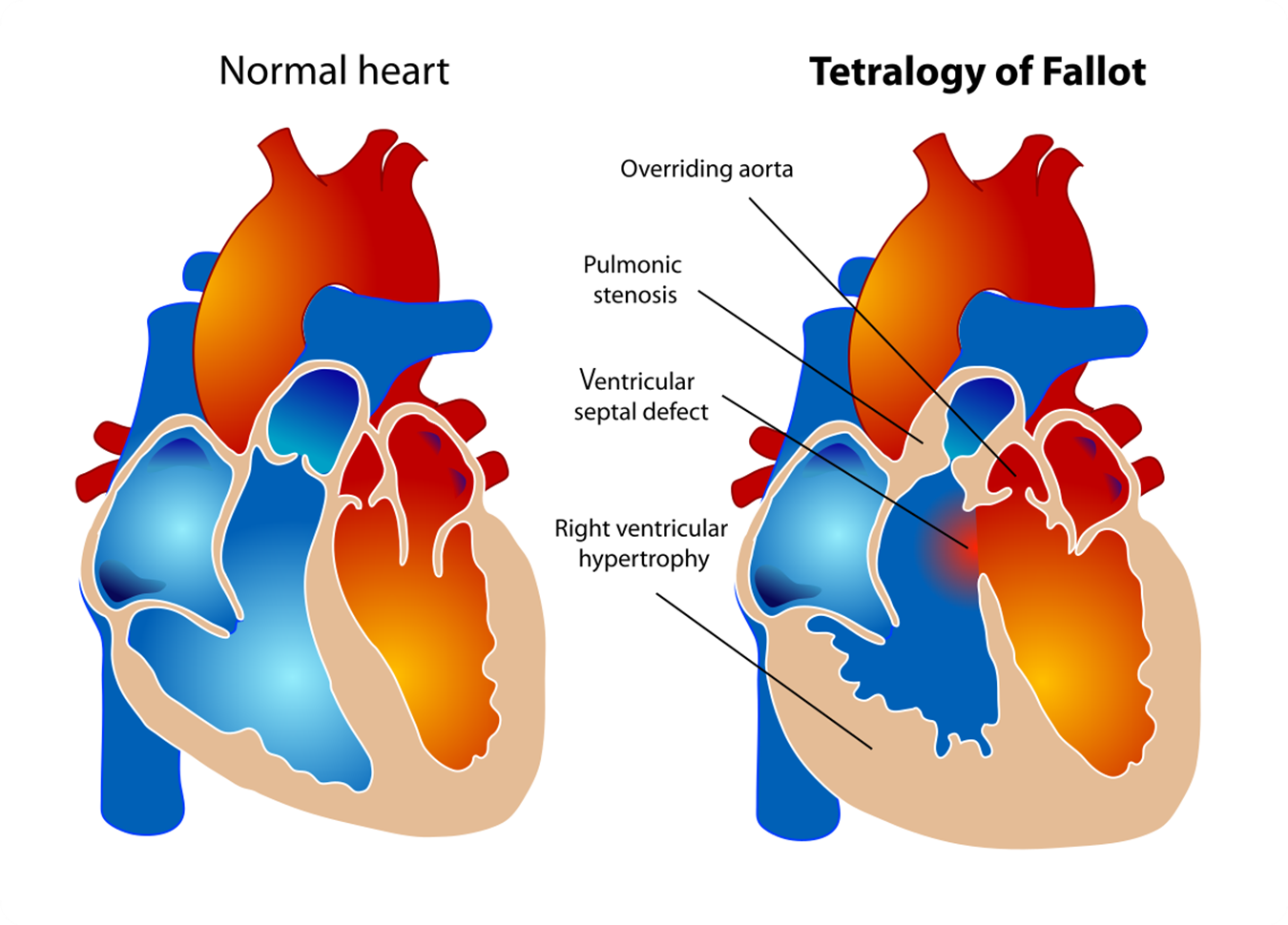A newborn frequently experiences cyanosis, typically during crying or after feeding. Which cardiac diagnosis is supported by this history?
Ventricular septal defect (VSD)
Atrioventricular canal (AVC) defect
Tetralogy of Fallot
Atrial septal defect (ASD) .
The Correct Answer is C
Choice A rationale
A Ventricular septal defect (VSD) is a hole in the wall separating the two lower chambers of the heart. While it can cause cyanosis, it would not typically cause cyanosis only during crying or after feeding.
Choice B rationale
An Atrioventricular canal (AVC) defect is a combination of heart problems resulting in a defect in the center of the heart. While it can cause cyanosis, it would not typically cause cyanosis only during crying or after feeding.
Choice C rationale
Tetralogy of Fallot is a rare condition caused by a combination of four heart defects that are present at birth. These defects, which affect the structure of the heart, cause oxygen-poor blood to flow out of the heart and into the rest of the body. Infants and children with Tetralogy of Fallot usually have blue-tinged skin because their blood doesn’t carry enough oxygen. This is often more noticeable during episodes of crying or feeding.
Choice D rationale
An Atrial septal defect (ASD) is a hole in the wall between the two upper chambers of your heart (atria). The condition is present at birth (congenital). Small defects might be found by chance and never cause a problem. Some small atrial septal defects close during infancy or early childhood. While it can cause cyanosis, it would not typically cause cyanosis only during crying or after feeding.

Nursing Test Bank
Naxlex Comprehensive Predictor Exams
Related Questions
Correct Answer is ["B","C","D","E"]
Explanation
Choice A rationale
Promoting a diet high in saturated fats is not a recommended strategy for preventing cardiovascular disease. Saturated fats can raise the level of cholesterol in your blood and increase your risk of heart disease and stroke.
Choice B rationale
Advising smoking cessation is a crucial intervention in preventing cardiovascular disease. Chemicals in tobacco can damage the heart and blood vessels, leading to narrowing of the arteries (atherosclerosis). Atherosclerosis can ultimately lead to a heart attack.
Choice C rationale
Regular blood pressure monitoring is important because high blood pressure is a significant risk factor for heart disease. It can cause the arteries that supply blood to your heart muscle to harden and narrow, leading to a heart attack.
Choice D rationale
Regular cholesterol screenings are essential because high levels of cholesterol can lead to the buildup of plaques in your arteries, increasing your risk of heart disease.
Choice E rationale
Encouraging regular physical exercise is a key strategy in preventing cardiovascular disease. Regular exercise helps control your weight and reduce your chances of developing other conditions that may put a strain on your heart, such as high blood pressure, high cholesterol, and diabetes.
Correct Answer is A
Explanation
Choice A rationale
Providing a pressure-reducing mattress, while important for preventing pressure ulcers, is not directly related to improving gas exchange in the lungs. Therefore, it would be considered the least priority intervention for a nursing diagnosis of impaired gas exchange related to fluid in the alveoli.
Choice B rationale
Administering oxygen and monitoring for dry nasal mucus membranes is a crucial intervention for a patient with impaired gas exchange. Oxygen therapy can help increase the amount of oxygen in the blood and alleviate symptoms of hypoxemia.
Choice C rationale
Encouraging the client to turn, deep breathe, cough, and use the incentive spirometer can help improve lung ventilation, promote the clearance of secretions, and prevent atelectasis, thereby improving gas exchange.
Choice D rationale
Placing the client in Fowler’s position can help improve lung expansion and gas exchange by reducing pressure on the diaphragm, making it easier for the patient to breathe.
Whether you are a student looking to ace your exams or a practicing nurse seeking to enhance your expertise , our nursing education contents will empower you with the confidence and competence to make a difference in the lives of patients and become a respected leader in the healthcare field.
Visit Naxlex, invest in your future and unlock endless possibilities with our unparalleled nursing education contents today
Report Wrong Answer on the Current Question
Do you disagree with the answer? If yes, what is your expected answer? Explain.
Kindly be descriptive with the issue you are facing.
